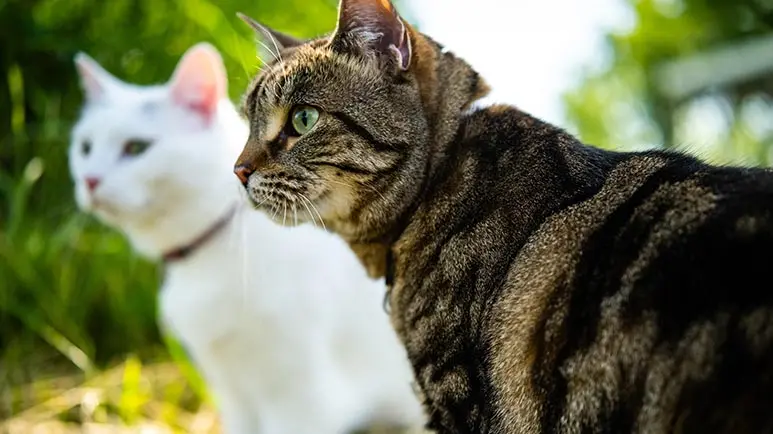The Gap Between Housecats and Wild Cats — Explained in One Humorous Sentence
Scientists are getting more of a glimpse of the markers for a cat's domestication, and they may not be as extreme as you think. A senior author and chief scientific officer in St. Petersburg, Russia summed it up in one well-spoken sentence.

STORY AT-A-GLANCE
- Even though cats have been a part of our lives for thousands of years, we know very little about how they became domesticated
- An international research team recently found DNA evidence of feline domestication through genome sequencing
- The researchers discovered that housecats have evolved away from wild cats in the areas of aggression, memory formation, and reward-seeking behavior
Editor's Note: This article is a reprint. It was originally published May 11, 2015.
Humans have been hanging out with cat companions for nearly 10,000 years, but despite all the quality time we’ve spent with them, we still know very little about how kitties became domesticated.
Humans and canines have been living cooperatively for around 30,000 years, and pet dogs are considered fully domesticated. Cats, on the other hand, are only "semi-domesticated" according to Washington University School of Medicine’s Wesley Warren, Ph.D.1
"They only split off from wild cats, and some even still breed with their wild relatives. So we were surprised to find DNA evidence of their domestication," says Warren, who is senior author of an analysis of the cat genome published late last year in the Proceedings of the National Academy of Sciences.2
Housecats vs Wild Cats
Scientists learn about the genetics of domestication by assessing what parts of the genome are altered as a result of animals living with humans. The research team lead by Washington University compared the genomes of domestic cats to wild cats to look for specific areas of the domestic cat genome that experienced rapid changes.
They discovered that compared to wild cats, housecats have more mutations on genes involved in mediating aggressive behavior, forming memories, and controlling the ability to learn from either fear or reward-based stimuli. The cats with domestication-friendly gene mutations mated and passed those traits down from parent to kitten until there was a good-sized population of less aggressive cats.
According to Stephen O’Brien, another of the paper’s senior authors and chief scientific officer at the Theodosius Dobzhansky Center for Genome Bioinformatics in St. Petersburg, Russia:
“There’s a big difference between housecats and wild cats. A housecat will sit on your lap, but a wild cat will hand you your behind.”
The researchers hypothesize that thousands of years ago, humans probably grew to appreciate cats for their rodent control abilities. In order to entice the kitties to stick around, the humans offered food rewards.
Cat Genome Project
This research is actually part of a larger cat genome sequencing project that began in 2007 to study inherited diseases in housecats. Some of those diseases are similar to human diseases, including neurological disorders, and infectious and metabolic diseases.
For this study, the researchers sequenced a female Abyssinian cat named Cinnamon whose lineage has been traced back several generations. Cinnamon’s sequencing provided the reference genome. The researchers also sequenced the genomes of certain purebred domestic cats and determined that certain features such as coat color, texture, and pattern, as well as facial structure and how docile a cat is are markers of their domestication.
They also compared the cat genome with the genome of other mammals, including a tiger, cow, dog, and human, to learn more about feline biology. The differences they discovered in the cat genome help explain why kitties are obligate carnivores, and how their eyesight and sense of smell differ from other animals.
For example, the researchers found specific fat-metabolizing gene mutations in cats and tigers that give them the ability to digest fatty meals of animal protein. These mutations aren’t present in the genes of cows and humans.
The team also discovered that cats have fewer genes for smell than dogs, probably because they rely less on smell to hunt than dogs do. But they have more pheromone-detecting genes that allow them to seek out mates, which can be a bit of a challenge for naturally solitary animals.
Kitties also have better hearing than most carnivores, and their vision is extraordinary in low light, which makes sense since they tend to be more active at dawn and dusk.
So while the genomes of housecats have changed very little since splitting from their wild counterparts, it’s still possible with sequencing to see markers of more domestication.











